The origin of chili can be traced back to the ancient and vibrant cultures of the Americas and it has been perfected over centuries of testing and tasting. Nowadays, it incorporates diverse ingredients and techniques, with the most important ingredient being, of course, the chili spices.
Table of Contents
What is the Origin of Chili?

The chili dish can be traced back to the regions of Mexico and the American Southwest. Specifically, the Indigenous peoples of Mesoamerica have played the most central role. Native populations in these areas cultivated chili peppers, utilizing them in various culinary preparations. Indigenous cuisines in Mexico incorporated chili peppers into their recipes, creating stews, sauces, and other spicy meals.
It is therefore believed that the first true chili dish emerged in Mexico, where chili peppers were combined with other native ingredients to create a harmonious blend of flavors. These developments influenced and contributed to the broader culinary traditions surrounding chili, which later resulted in dishes like chili con carne and the Texas chili.
Chili peppers have been an integral part of Mexican cuisine for centuries, and chili-based dishes were popular in Mexico before they gained prominence in the USA and other parts of the world. The use of chili peppers can be traced back to the ancient civilizations of Mexico, such as the Aztecs and Mayans, who cultivated various types of chili peppers and incorporated them into their culinary traditions.
READ MORE: The Aztec Empire: The Rapid Rise and Fall of the Mexica
The spread of chili peppers and chili-based dishes throughout Mexico and Central America can be attributed to several factors. Firstly, chili peppers were native to the region, meaning that they were readily available for the local population to use.
The diverse climates and agricultural practices of Mexico and Central America allowed for the cultivation of different varieties of chili peppers, each with its own unique flavor and heat profile. If people ventured into new places, they made sure to take the peppers from that particular region and bring them home.
Additionally, Indigenous populations had elaborate trading networks that included the trade of chili peppers and chili-based dishes. Because of this, different chili dishes gradually spread across Mesoamerica.
Chili for the People
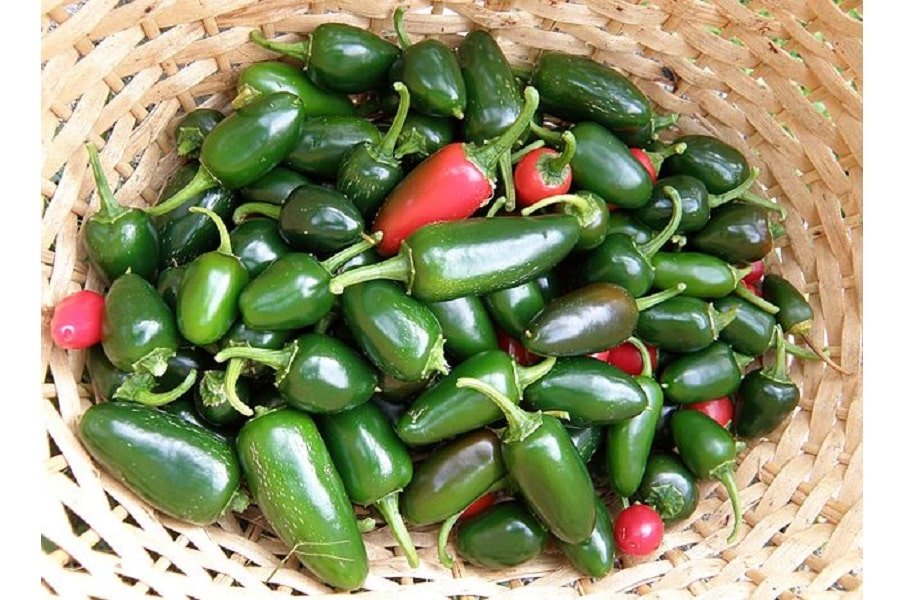
Green chili peppers like Jalapeño or red chili like habanero were all prepared through drying, smoking, or simply used as fresh peppers. In order to connect chili dishes to the wider public, street vendors and marketplaces played a crucial role.
Vendors in Mesoamerica would sell prepared chili-based dishes, such as stews or sauces, to locals and travelers. These vendors would often set up stalls or stands, offering a range of spicy delicacies.
The popularity of chili-based dishes in Mexico and Central America gave rise to regional variations and culinary traditions. Each region developed its own unique take on chili dishes, which was always rooted in local ingredients and flavors.
For example, in the Yucatán Peninsula, achiote paste and sour orange juice are often combined with chili peppers to create the signature flavor profiles of dishes like cochinita pibil. In Oaxaca, the rich and complex mole sauces feature chili peppers as a key ingredient, blended with spices, nuts, and chocolate.
Why is Chili Called Chili?
When the Spaniards invaded the Americas, they found a new spicy food that they hadn’t encountered before. Since it was native to the area, they decided to simply take over the name that the Aztecs already used to refer to the plant. ‘Chil’ was the nahuatl word that refers to the Capsicum plant – the chili plant. The term ‘chile’ emerged as a Hispanic variation of this word, while ‘chili’ with the letter ‘i’ became the English rendition.
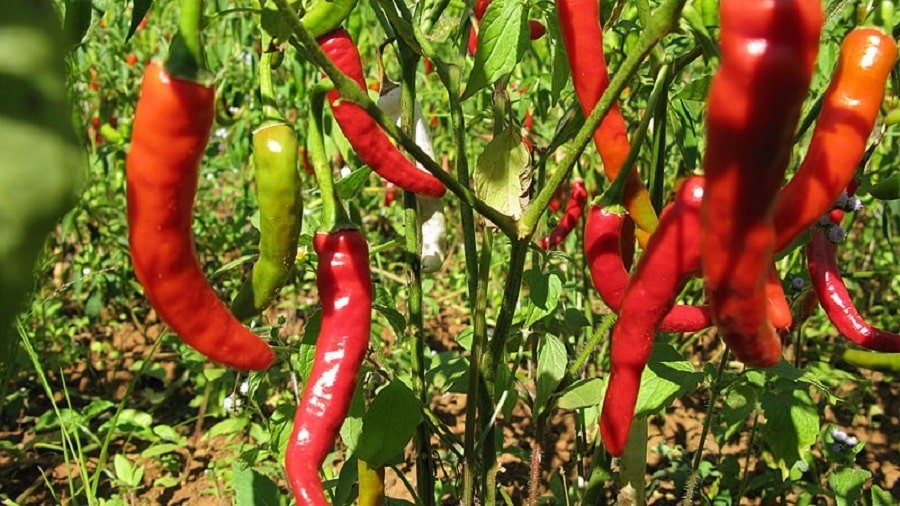
READ MORE: Who Discovered America: The First People Who Reached the Americas
Popularisation of Chili in the US
The 19th century was a great century for chili in the US. Particularly among Mexican ranchers and cowboys, the hearty dish gained quite a popularity. However, there wasn’t yet an infrastructure for chili to become loved by everyone.
San Antonio Chili Stand
This changed with the introduction of chili on the streets. Indeed, what was already happening in Mexico and Central America also started happening in the US.
During the 19th century, the US city of San Antonio, Texas, became home to a vibrant culinary scene centered around chili stands and the iconic ‘Chili Queens’. The Chili Queens were entrepreneurial women that swarmed the streets with their pots of simmering chili con carne.
Quite quickly, it became an integral part of the city’s cultural fabric. The first chili stand can even be traced back to the late 1800s and over the years, their popularity only grew. As the city grew and thrived, the chili stands of San Antonio became gathering places for locals and visitors alike.
Most of the Chili Queens were of Mexican descent, meaning that the stands themselves were also set up in typical Mexican fashion. The chili joints had an inviting atmosphere with tables and benches adorned with colorful tablecloths. The chili was often served with tortillas or bread, providing a hearty meal for all the workers.
The emergence of the chili joints meant that the chili culture in Texas gained even more momentum in the late 19th century. The participation of chili parlors in chili cook-offs became a widespread occurrence. These events showcased the skills of chili cooks and helped establish chili con carne as a symbol of Texan pride and heritage.

Where are the Chili Queens Now?
The Queens played a vital part in the popularization of chili. They were basically the first chili parlors out in the US. Every Chili Queen had her own interpretation of the dish, providing a diverse food landscape in the Texas region. Visitors from across the country, including politicians, soldiers, and celebrities, made a point to visit the plazas and sample the renowned chili.
However, the reign of the Queens was not without challenges. In the early 20th century, health concerns and evolving regulations led to the closure of the chili stands. In 1943, the city of San Antonio passed a law that prohibited food vending in public spaces.
Despite the closure of the stands, the legacy of the Chili Queens lives on. Their contribution to San Antonio’s culinary heritage and the popularization of chili con carne cannot be overstated. The spirit and vibrancy of the Chili Queens have become a cherished part of the city’s cultural identity.
Official Texas State Dish
‘The only real ‘bowl of red’ is that prepared by Texans’. That’s what any chili parlor in Texas would tell you, even now the Queens are gone.
The Texas chili and chili powder are renowned for their robust flavors, hearty texture, and rich history. The quote from above is actually the result of some heavy lobbying. In 1977, chili manufacturers in the state of Texas lobbied to have chili proclaimed the official ‘state food’ of Texas.
This honorary recognition reflects the deep-rooted love and cultural significance of chili in the state, which started with the initial Queens roaming the streets.
Recognition of Chili
The official recognition of chili as Texas’ state dish took place on May 24, 1977. The Texas Legislature passed House Concurrent Resolution No. 18, which designated chili con carne as the official state dish.
Chili’s designation as the official state dish represents its deep connection to Texan identity, reflecting the state’s diverse history, including its Mexican and cowboy influences. The resolution recognized chili as a unifying force that brings people together, transcending social, cultural, and regional boundaries.
The recognition of chili as Texas’ official state dish lives on to this day, and has solidified its place in the hearts of Texans and beyond. The cultural impact of chili in Texas is evident through the numerous chili cook-offs, festivals, and events held throughout the state.
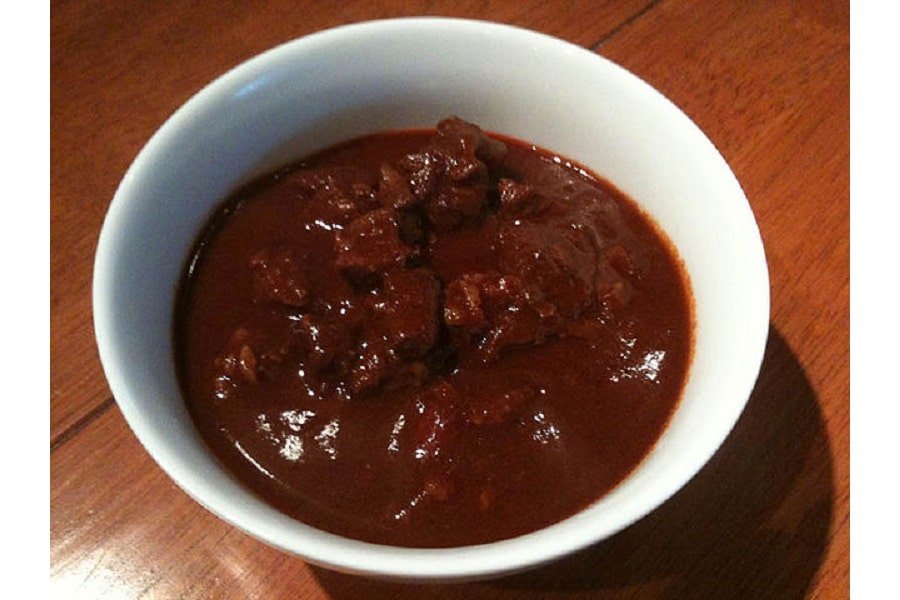
The Prisoner’s Plight
The power of chili actually has penetrated the Texas prison system through something that is known as the ‘prisoners plight’. This became an unexpected symbol of distinction within the Texas prison system, as inmates used to judge the quality of different correctional facilities based on the taste and quality of their chili.
The reputation of Texas prisons for serving such good chili was so widespread that former inmates would frequently reach out, asking for the recipe since they missed the taste so much.
While being in challenging circumstances, inmates found a sense of camaraderie and shared experience while discussing and comparing the flavors and ingredients of chili served in different correctional facilities. It even became a form of currency in the realm of prison culture, a way to assess and establish the reputation of a particular jail.
Is Chili Considered Mexican Food?
Dishes that revolve around chili have been made for centuries by ancient civilizations like the Mayas and Aztecs. Does this make the chili dish Mexican food? Not always, because the ‘bowl of red’ from the Texans is not a Mexican invention. Chili is a dish that is interpreted in many different ways and continues to evolve to this day. While the idea of a fiery stew is definitely Mexican, the ingredients in chili dishes today are different than the original ones.
What Should Be Considered Chili?
When the average Westerner thinks of chili, they think of chili con carne; a dish that contains tough beef or pork, beans, and the actual chili. Some might add chopped onion, cheddar cheese, shredded cheese, or sour cream. The beans, rather than the chili, are often seen as the main ingredient of the dish. However, does the original chili have beans?
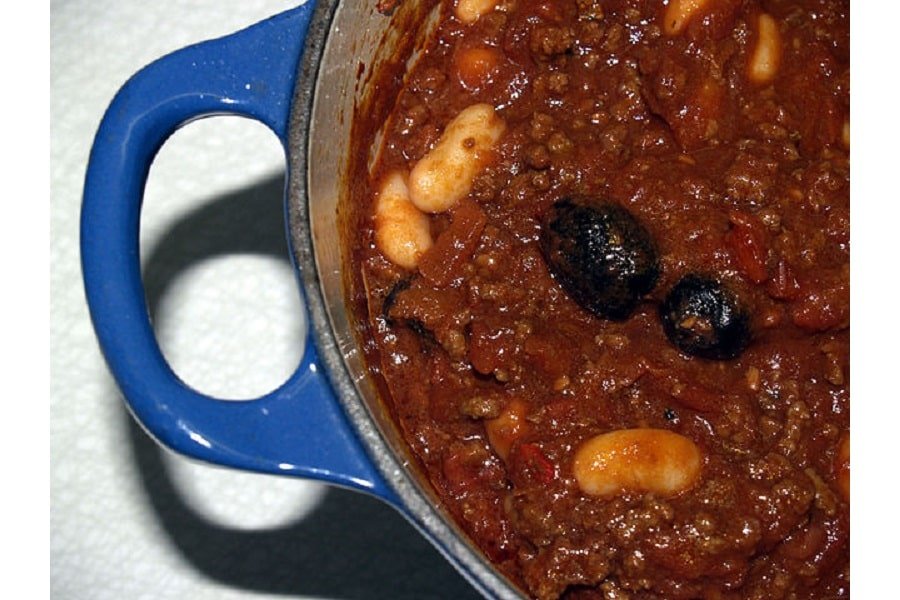
Does Original Chili Have Beans?
The answer is actually no: chili has no beans. Or rather, not necessarily. The addition of red kidney beans is just a regional variation that arose when the dish came to the USA. Authentic historical recipes began at the meat market, where the best meat was bought to eventually mix with peppers, onion, garlic, and spices.
The addition of beans to chili originated in the United States, specifically in the late 19th century and early 20th century. Beans were an affordable and accessible ingredient that could stretch the dish and provide additional texture and substance. They became a popular addition, particularly in regions like Texas, where chili con carne became a staple.
The inclusion of beans in chili can vary based on regional preferences and personal taste. Some regions and individuals continue to prepare chili without beans, adhering to the traditional meat and chili pepper-focused recipe. Others enjoy the chili madness and flavor combination that beans bring to the dish and choose to include them.
Spanish Influence
One influence that also contributed to the chili we know today comes from the Spaniards.
When it came to the actual lands, the Spaniards preferred stealing and exhausting them. The Mexican food, however, was simply too good to just claim and exhaust like that, so they opted to supply the already existing recipes.
Spice It Up
The Spanish introduced several key ingredients and cooking techniques that greatly influenced chili-based dishes. One of the most notable Spanish contributions to the chili dish is the introduction of various spices and herbs. Spain had a rich culinary tradition and brought with it a range of spices, including cumin, oregano, and garlic.
These spices became integral components of chili-based dishes, enhancing their flavor profiles and adding depth to the overall taste. The Spanish also introduced the technique of sautéing or frying ingredients before stewing them, a process known as sofrito.
This cooking method involves lightly browning ingredients such as onions, garlic, and sometimes tomatoes in oil or fat before adding them to the stew or sauce. Sofrito became a fundamental step in the preparation of chili-based dishes, adding layers of flavor and complexity.
Furthermore, the Spanish influence extended to the incorporation of ingredients such as tomatoes, onions, and garlic. Tomatoes, in particular, were not native to the Americas but were brought over by the Spanish during the colonization period.
The addition of tomatoes to chili-based dishes not only enhanced the flavor but also contributed to the characteristic red color of many chili recipes.
Spanish colonizers encountered chili-based dishes and incorporated them into their own culinary repertoire. The fusion of Mesoamerican and Spanish cuisines is also the exact moment when chili con carne began. By mixing the many spices from the Spaniards and the novel plants from the Mexicans, a new chapter for chili opened up.
The Origin of the Chili Pepper
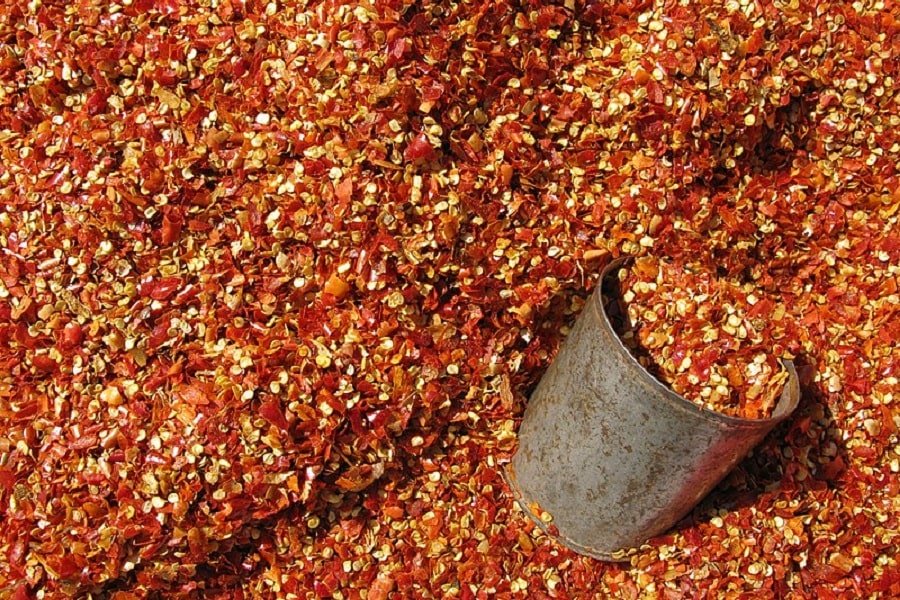
It’s great to know a fair bit about the dish that eventually became the state dish of the Texans, a dish that has been redesigned so often that it doesn’t really have one specific originator. Still, it’s undeniable that the most important ingredients in the dish are the peppers and pepper seeds.
If we look at the history of chili through the lens of the plant, we can even further understand the actual roots of the dish. The origin of chili peppers can be traced back to the Americas, specifically to the regions of present-day Mexico, Central America, and parts of South America.
The wild ancestors of chili peppers are believed to have originated in the Andean region of Bolivia, Peru, and Ecuador. Archaeological evidence suggests that chili peppers have been cultivated and consumed for thousands of years.
The earliest known evidence of chili pepper consumption dates back to around 7,000 BC, based on the presence of chili pepper remnants found in the ancient kitchen remains in Mexico.
These findings indicate that indigenous populations in the Americas were using chili peppers long before the arrival of European explorers, which wasn’t really a debated piece of information, to begin with.
The domestication of chili peppers began around 6,000 BC in Mesoamerica. More particularly, the areas that are now part of Mexico and Guatemala were the first ones to cultivate the now-famous chili. Native peoples recognized the culinary and medicinal properties of chili peppers and started selectively breeding them to enhance desirable traits.
Over generations of cultivation, wild chili varieties were transformed into domesticated plants with larger fruits, milder flavors, and better yields.
Cultural and Ritual Importance
So, chili peppers played a significant role in the cultures of Mesoamerican civilizations, including the Mayans and Aztecs. They were not only used as a food source but also had religious and ceremonial significance. Chili peppers were believed to have supernatural powers and were incorporated into rituals and offerings to the gods.
READ MORE: The 23 Most Important Aztec Gods and Goddesses
To the ancient Mesoamerican civilizations, chili peppers were seen as sacred plants with divine qualities. The fiery and intense heat of chili peppers was associated with supernatural powers and considered a manifestation of the divine.
Chili peppers were believed to possess the ability to ward off evil spirits, provide protection, and act as a conduit between humans and the gods. Even in Aztec mythology the god of fire and creativity, Xiuhtecuhtli, was closely associated with chili peppers.
The Aztecs believed that the cultivation and consumption of chili peppers pleased the gods and ensured bountiful harvests. Chili peppers were offered as sacred offerings during religious ceremonies and used as ingredients in ritualistic foods and beverages.

Medical Properties of Chili
Chilis were also believed to possess medicinal properties, meaning that they were used in ancient Mesoamerican healing practices. The sometimes incredible heat of chili peppers was thought to drive out illness and restore balance to the body and spirit.
It was believed that the consumption of chili peppers could stimulate the senses, awaken spiritual awareness, and strengthen the connection between humans and the divine realm. And, well, maybe they were right. Certainly about the sense awareness part.
Chili peppers also played a role in divination and fortune-telling practices. Shamans used them during their rituals since it was believed that the shape, color, and heat of chili peppers at harvest could give insights into the future, or provide guidance in decision-making processes.
The Spread of Chili Peppers
With the invasion of the Americas by Christopher Columbus in 1492, chili peppers were introduced to Europe and quickly spread across the globe as part of the exchange.
European explorers and traders recognized the value and versatility of chili peppers, and they were soon incorporated into the cuisines of various regions, including Asia, Africa, and the Middle East.
In Asia, chili peppers found fertile ground for adaptation and integration into local cuisines. Countries such as India, China, Thailand, and Korea embraced chili peppers and incorporated them into traditional dishes, creating unique flavor profiles and spicy delicacies.
Today, chili peppers are cultivated and consumed worldwide, with countless varieties and heat levels available. They have become an essential ingredient in diverse cuisines, and many cuisines see them as perhaps the most important ingredient.